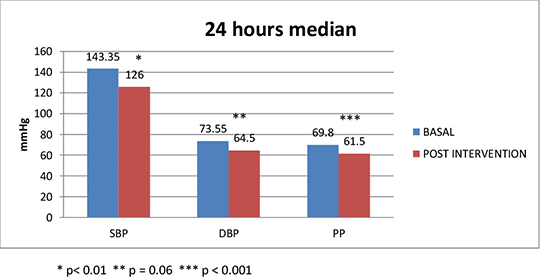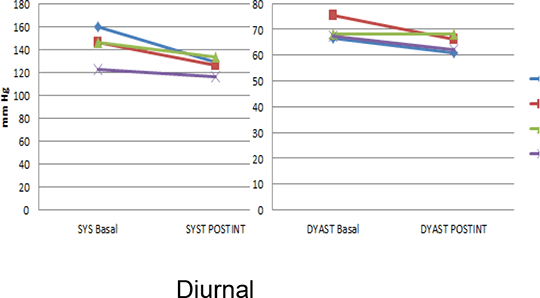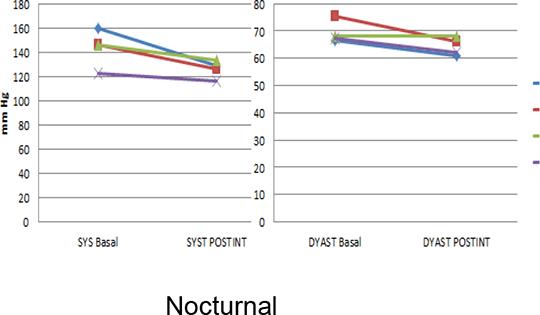Print version
Search Pub Med
Pilot phase of a randomized, cross-over clinical trial, for assessing the hypotensive effect of evening administration of acetylsalicylic acid
An increase of 10% in blood pressure, increases the risk of suffering cardiac events by 33% and cerebrovascular strokes by 50%.1 In the last decade, several interesting studies have been published demonstrating the hypotensive effect (7/4 mmHg) of low-dose acetylsalicylic acid (ASA) administered in the evening. These effects are not observed if the ASA is administered at other times of day2. Our hypothesis is that in hypertensive patients on low-dose ASA for secondary prevention, mean 24-h BP will fall by at least 5 mmHg if the drug is taken at bedtime rather than at another time of day. The objective of this study is to evaluate the antihypertensive effect of bedtime administration of low doses of aspirin in patients with treated hypertension and high cardiovascular risk on low-dose aspirin for secondary prevention, in order to optimize their usual treatment and reduce their cardiovascular risk. This is a prospective pilot phase IV multicenter and randomized clinical trial. From a preselecting list we included 4individuals with hypertension treated with low-dose aspirin in daily administration for secondary prevention. The intervention was taken aspirin at night instead daily administration. The main outcome measure is the change in mean blood pressure over 24 hours before and after the intervention. Figure 1 Comparing the 24-hour mean systolic blood pressure (SBP), diastolic blood pressure (DBP), and pulse pressure (PP). 
 
This represents an optimization of antiplatelet therapy, because in addition to antithrombotic effect of aspirin, we take advantage of its hypotensive effect. In the long term, this hypotensive effect can be expected to produce a considerable reduction in cardiovascular risk in these patients. Bibliografía: 1-Hermida RC, Calvo C et al. J Hypertens 2002 Jun;20(6):1097-104. 2- Hermida RC, Ayala DE et al. J Am Coll Cardiol. 2005 Sep;46(6):975-83.. 3- Felmeden DC, Lip GY. J Hum Hypertens. 2005 Mar;19(3):185-96. Review.
|


 Figure 2: Individual decrease of diurnal and nocturnal systolic blood pressure and diastolic blood
Figure 2: Individual decrease of diurnal and nocturnal systolic blood pressure and diastolic blood 
 In the figure 1 we can see a significative decrease in SBP and PP associated with post-intervention measurement. The figure 2 shows a decrease clinically significant in three of the patients. It is clinicaly significant when the decrease of BP achieves to 5mmHg because it reduces 12.5% of cardiovascular events
In the figure 1 we can see a significative decrease in SBP and PP associated with post-intervention measurement. The figure 2 shows a decrease clinically significant in three of the patients. It is clinicaly significant when the decrease of BP achieves to 5mmHg because it reduces 12.5% of cardiovascular events